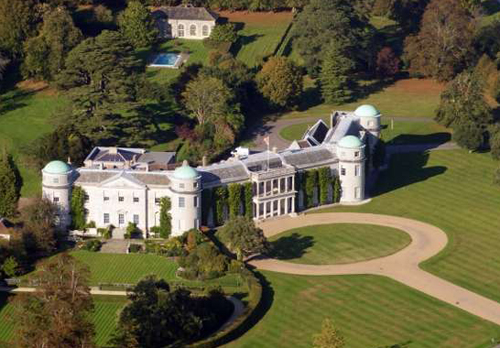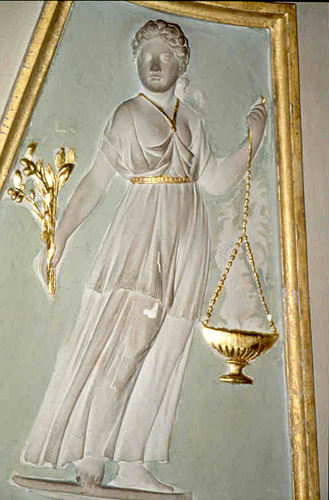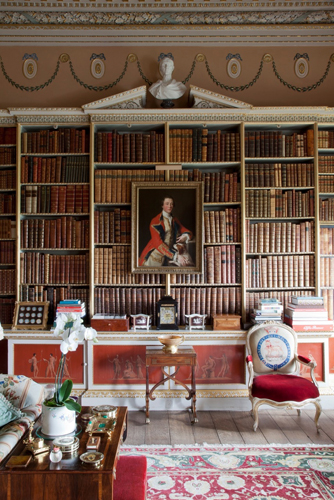
The first Duke of Richmond (1672-1723) bought Goodwood as a hunting Lodge in 1697. Part of the Jacobean house survives in the form of the present Long Hall.
It was the third Duke (1735-1806) who was responsible for the house as it exists today. The first phase of the rebuilding began in about 1760, when he commissioned Sir William Chambers to extend the house with wings at either end, to form an “H”. The present Long Hall became the Entrance Hall to this house. From 1787 onwards, James Wyatt worked for the Duke, adding the Kennels, and re-designing the house as an octagon. In the event, only three sides were built, one being a leg of the Chambers’ “H”, which became the west wing. To this he added a principal front with a colonnaded portico, and an east wing. Each of the three sides is terminated by circular towers with hemispherical roofs.
The Tapestry Drawing Room is the drawing room of the Jacobean house rebuilt by Chambers, and probably redesigned by Wyatt to accommodate the tapestries purchased by the third Duke in Paris while he was Ambassador there in 1765.
I was commissioned to carry out the paint analysis of the Tapestry Drawing Room and Large Library. Amongst other things I discovered that Wyatt’s original scheme survived on the ceiling of the former.

It was clear to me that there was little paint on the ceiling when I realised that the ‘smoke’ from the thurible was, in fact, bare plaster. An analysis of the paint confirmed this.
Curiously the advertisements of a well-known paint company suggest that they carried out the analysis here…

The Large Library is situated on the ground floor of the west wing, with the windows facing south. It is lined on three sides with bookcases, the cupboards in the bases of which are painted with classical bas-reliefs on a ground of Pompeian red. The subjects were taken from Sir William Hamilton’s collection of Greek, Etruscan, and Roman vases, found in southern Italy.
View Larger Map












No comments yet. Be the first!